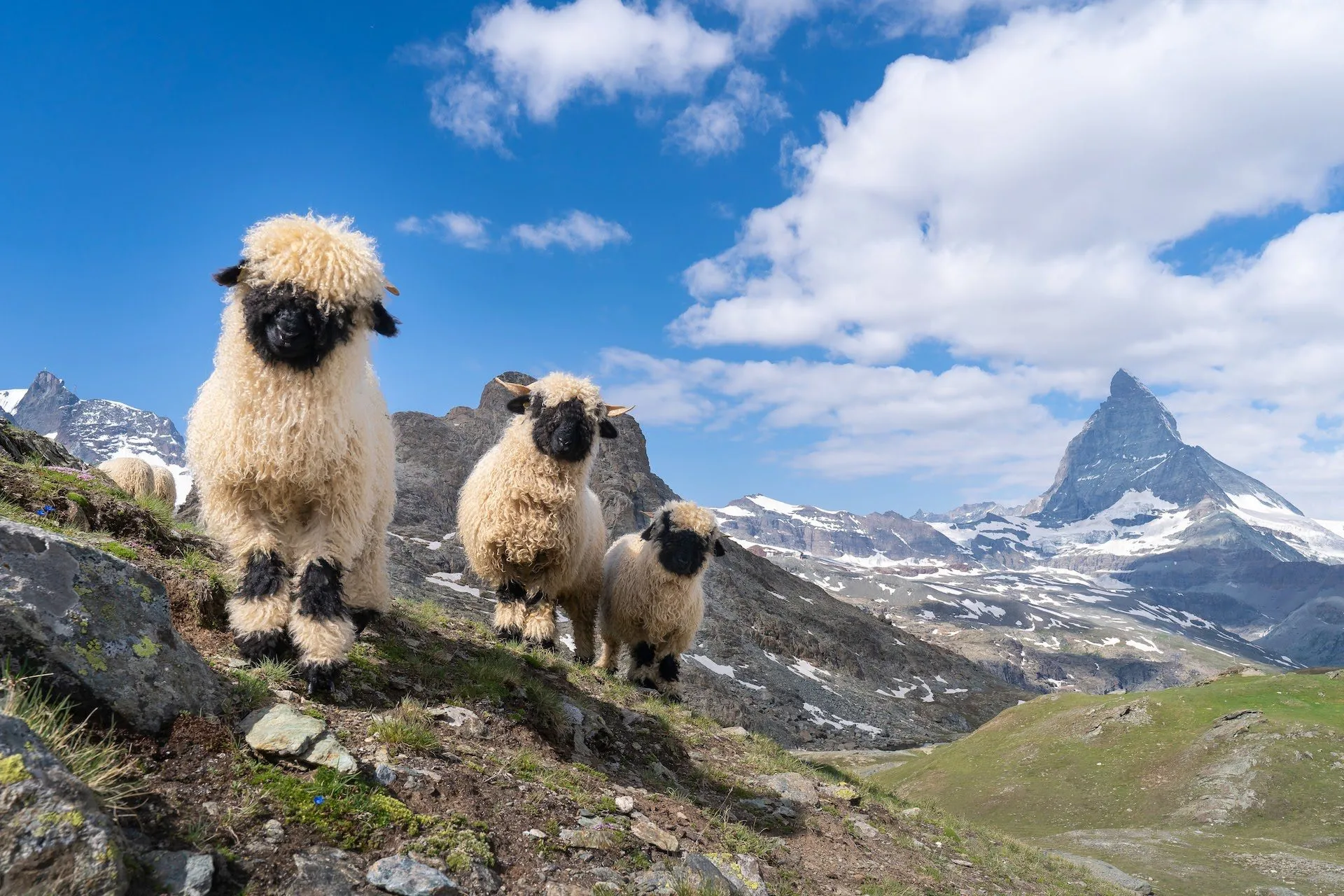The European mountains offer some of the most breathtaking and diverse hiking experiences in the world, and one of the most popular ways to explore them is through hut-to-hut hiking. This type of hiking allows hikers to carry minimal gear and stay in comfortable mountain huts along the way
In the Alps, well-maintained paths and spectacular views make for a truly unforgettable experience. The Matterhorn and Mont Blanc are some of the most famous peaks in the Alps, and both offer challenging hikes with the added comfort of staying in well-maintained mountain huts or rifugios.
Overall, European mountains are an ideal destination for hikers of all levels. The diverse range of trails and the stunning natural beauty make it a great way to explore the European mountains.
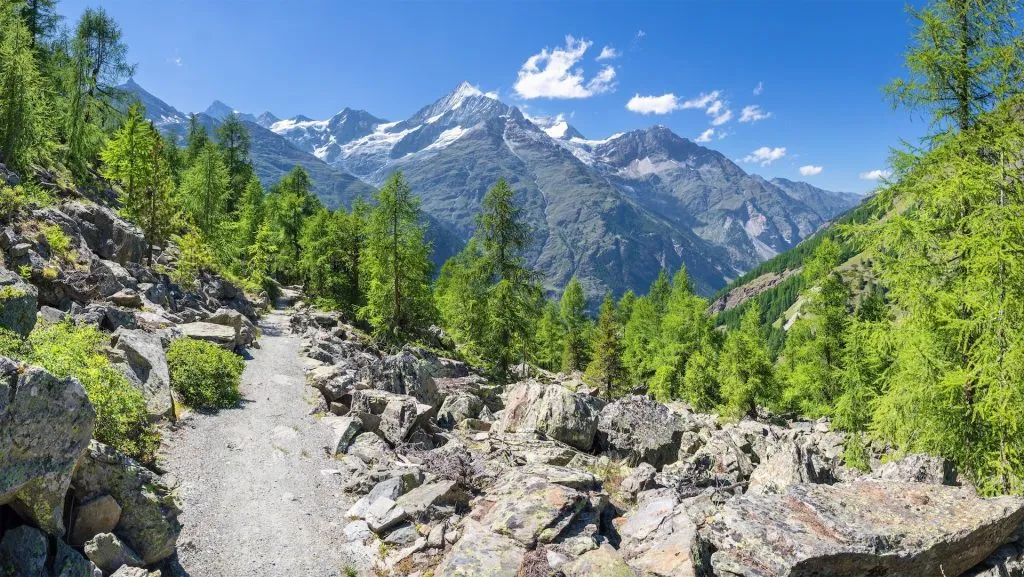
What is Hut-to-Hut Hiking?
Hiking is a popular outdoor activity that involves walking on trails in natural environments such as mountains, forests, and parks. It can be done alone or in groups and can range from easy, leisurely walks to strenuous, multi-day treks.
In contrast, Hut-to-Hut hiking is a type of hiking where hikers stay in mountain huts along the trail instead of camping. The huts provide a comfortable place to rest and sleep, as well as basic facilities such as food, water, and toilets.
Instead of carrying a heavy bag on your back as you trudge through miles of forest, you can carry only a small backpack with your belongings inside it as you hike between huts each night. Hut-to-hut hiking is perfect for those who want the best parts of camping without having to worry about setting up tents or cooking meals over an open flame—and the scenery is just as beautiful!
Best Hut-to-Hut Hikes in Europe
Discover the ultimate freedom of the trails with our curated list of the best hut to hut hikes in Europe, where breathtaking landscapes meet cozy mountain refuges. Check out our offer of hikes and destinations here.
Slovenian Mountain Trail
The Slovenian Mountain Trail is one of the best hut-to-hut hikes in Europe and offers a unique experience and charm of the Julian Alps and the Karawanks. The route starts in the Karawanks on the Austrian border and leads to the heart of the Julian Alps and the Triglav National Park.
The shorter and less demanding route, The Slovenian Mountain Trail Highlights Hike is a great way to explore the country’s mountain landscape. It runs along a picturesque and less challenging section and will allow you to experience the local culture, food, and good-quality accommodation.
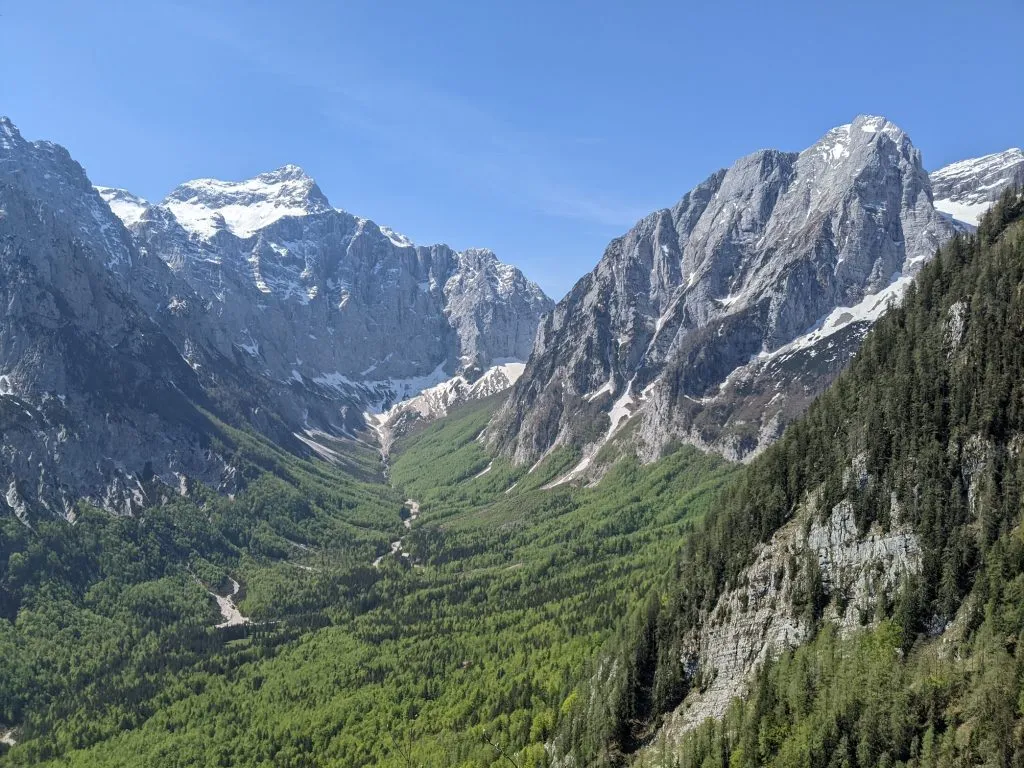
Adlerweg
The Adlerweg is a 413-kilometer, 31,000-meter elevation gain hike in Austria that can be a lifelong project for most hikers.
A shorter version, The Adlerweg Highlights, through the scenic Karwendel Alps, can be completed in five days. This 80-kilometer, 4500-meter elevation gain hike is still a worthy challenge that not everyone can undertake, but the satisfaction and memories gained are indescribable. Your hike will include peaceful nights in high-altitude huts, with delicious local cuisine.
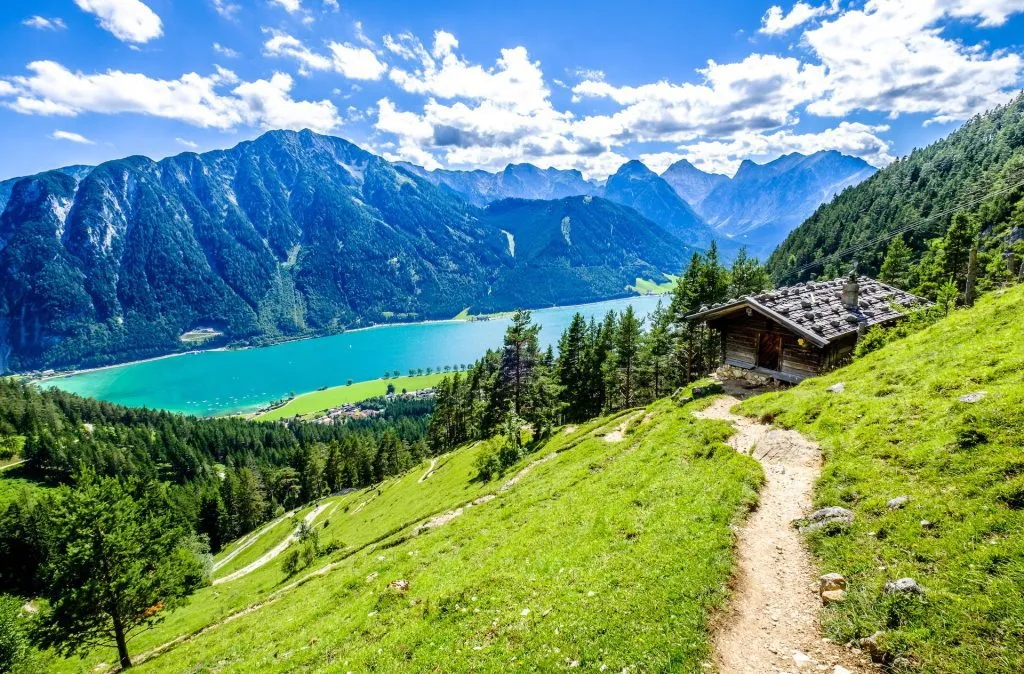
Alta Via 1
Alta Via 1 is one of Europe’s most well-known multi-day hikes, winding through the Dolomites, a picturesque Italian mountain range. It is 120 kilometers long, with large parts running above an altitude of 2000 meters, reaching as high as 2752 meters above sea level at its highest point. Hikers overcome around 6700 meters of elevation gain, which they usually complete within 9-11 days.
The route begins along the shores of Lago di Braies and concludes in La Stanga near Belluno, passing through scenic mountain passes such as the Falzarego mountain pass, Passo Giau, and Passo Duran, as well as past iconic peaks like Monte Civetta and Monte Pelmo.
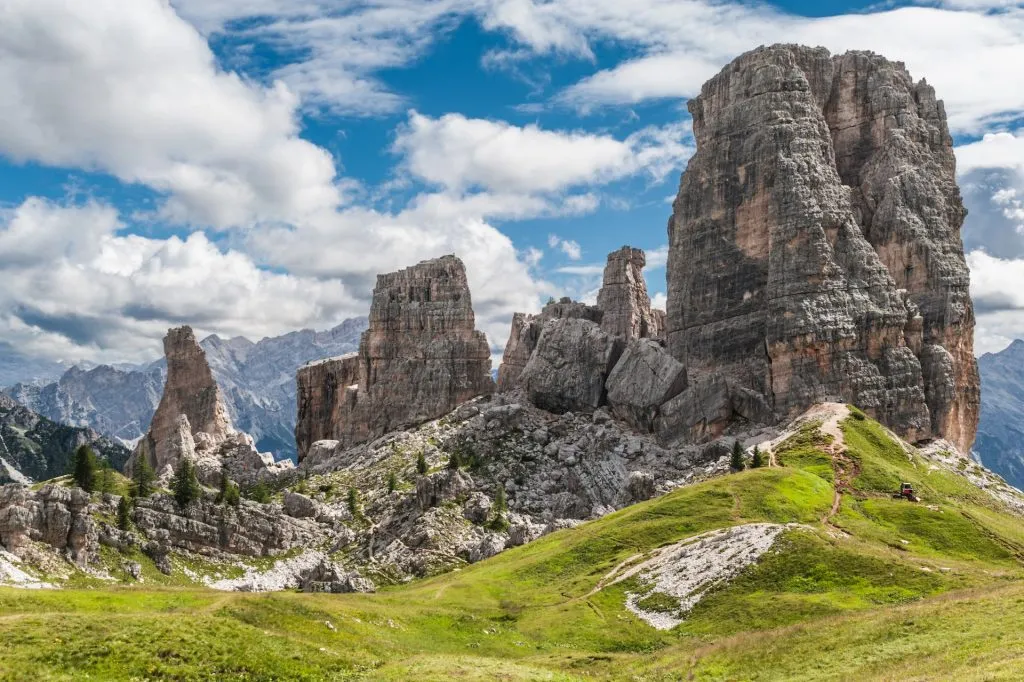
Tour du Mont Blanc
Tour du Mont Blanc is one of the most popular and rewarding hut-to-hut hikes in the world. It takes you through the valleys and mountainsides of Italy, France, and Switzerland, around Western Europe’s highest peak. The classic self-guided version of the trail is 11 stages and around 170 kilometers. It’s perfect for those who want to experience the full journey but requires a great deal of preparation and planning. Shorter and less demanding routes are also available as alternative ways to experience Tour du Mont Blanc.
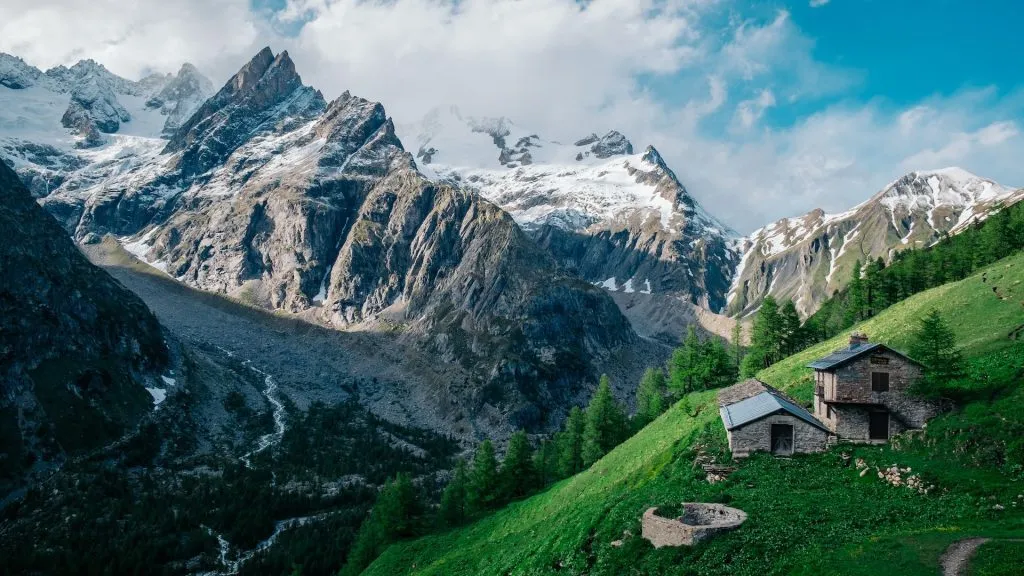
Walker’s Haute Route
The Walker’s Haute Route is a legendary long-distance hike that takes you from Chamonix to Zermatt, crossing some of the most imposing 4000m peaks in the Alps. It’s one of the most scenic trekking routes in the world, gaining popularity among hikers. With the glaciers disappearing due to climate change, now is the perfect time to experience it. The Haute Route is about 200 kilometers long and has 15,000 meters of elevation gain, passing through many different landscapes and offering the chance to see wildlife such as ibexes, chamois, and marmots.
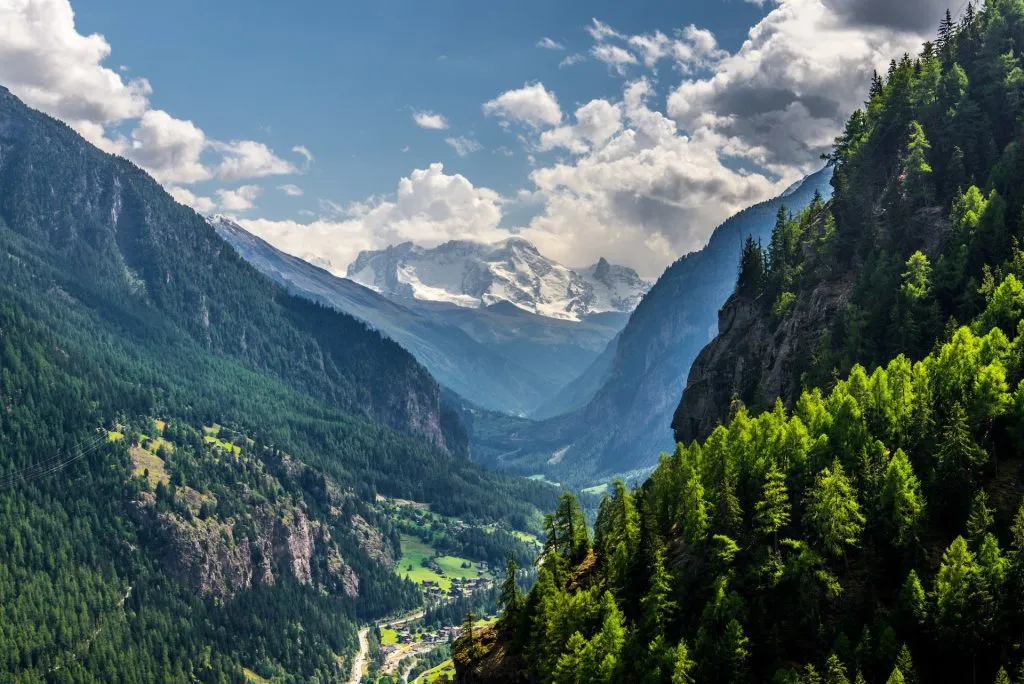
What Do I Bring on the Trip?
When planning for a Hut-to-Hut hiking adventure, it is essential to pack light and only bring what is necessary. Food and drinks are available in huts, which also means you don’t need to carry a tent with you.
For clothing, we recommend having a good softshell jacket for wind protection. Even though it is summer and the weather is warm, it’s good to take enough extra layers, so you don’t get cold when the temperatures suddenly drop.
The most important item you’ll have with you are your shoes. They need to be comfortable and worn in. Shoes must be sturdy enough to protect your feet from the rocks and have a grippy outsole that prevents slippage. Do not go on a hike in regular sports sneakers!

In general, some items you should consider packing for a Europe Hut-to-Hut hiking trip include:
Clothing:
- Comfortable sports clothes
- Sports shoes with good grip
- Insulation jacket
- Extra layers
- Rain jacket
- Headwear
- Gloves
- Spare socks, underwear and shirts
For overnight stays in huts:
- Sleeping liner
- Some cash for food and accommodation
- UIAA membership card for accommodation discount
- Toothbrush
- Earplugs
- ID card
- Powerbank (power sockets are often taken)
Other equipment:
- Hiking backpack 25-30 l
- Trekking poles
- Snacks
- Water bottle and a sports drink with electrolytes
- Sunscreen
- Toilet paper
- Headlamp
What is the Best Time of the Year to Go?
The best time to go for a hut-to-hut hiking trip can vary depending on the location and the specific trail. In general, the summer months of June, July, and August are the most popular for hiking and hut-to-hut hiking as the weather is typically warm and the trails are snow-free. However, some hikers prefer to go in the shoulder seasons of May and September as the weather can be milder, the trails less crowded and the scenery can be quite beautiful with the changing colors of autumn.
It’s also important to check the specific trail you will be hiking, some high-altitude trails may not be accessible until late June or early July due to snow. It’s always best to check the local weather forecast, trail conditions, and the availability of huts before planning your trip.
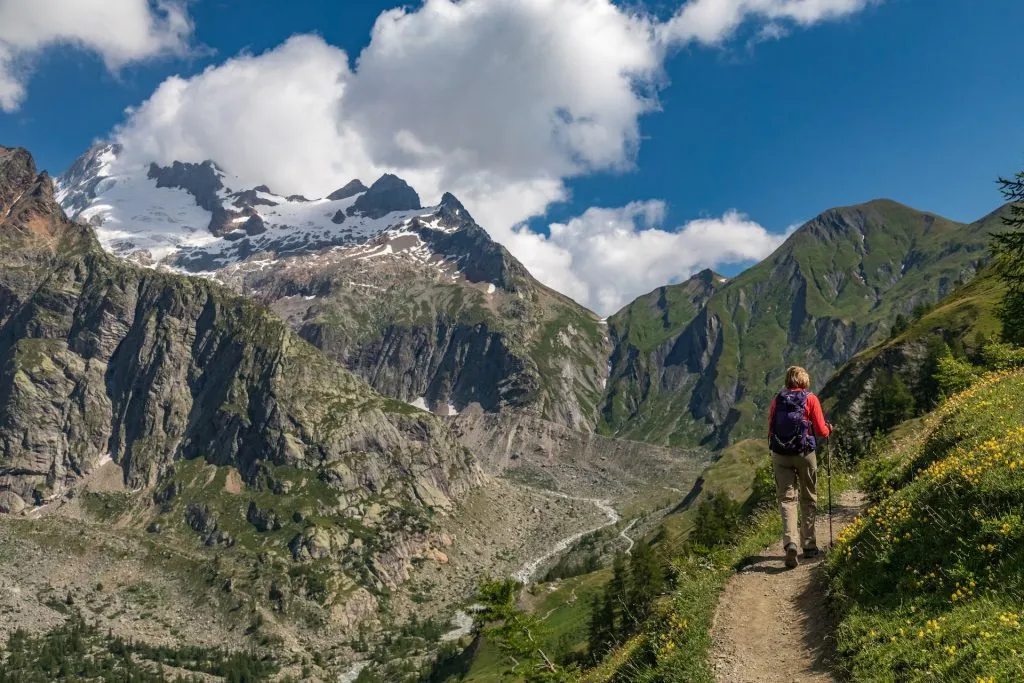
What are the Huts in Europe Like?
When planning for a Hut-to-Hut hiking trip in the Slovenian mountains, it’s important to keep in mind the general comfort level of the huts. The huts are often secluded and “away from civilization” which means the comfort level is basic but they are clean, cozy, and have everything you need for an overnight stay.
Most huts have both dormitories and separate rooms, with the latter usually booked first. If you prefer a private room, it’s best to book early. Huts provide blankets, bedding, and pillows. However, hikers can also bring their own liners.
Regarding amenities, lower-altitude lodges usually have their own drinking water source while high-altitude ones do not, some must get their water supply by helicopter deliveries while most still collect rainwater. Showers are a luxury only possible in some low-altitude huts.
Huts offer authentic traditional homemade dishes like stews, sausages, goulash, etc. Breakfast is usually eggs or different kinds of spreads on bread, so taking the half-board package is worth it. Regarding drinks, you can buy bottled water, and they also serve beer, wine, and home-brewed schnapps.

Hut-to-hut hiking makes you travel to some of the most beautiful places in Europe!
In short, Hut-to-Hut hiking is a popular and unique way to experience the European mountains. It provides a comfortable and convenient way to explore the mountains while carrying minimal gear, and staying in well-maintained mountain huts.
It offers a combination of adventure and comfort, allowing hikers to experience the natural beauty of the European mountains while enjoying the cozy confines of the huts.
Check out all the Hut-to-Hut hiking brands in Europe and plan your next vacation now! An ideal way to explore the European mountains for hikers of all levels, from beginner to experienced.




